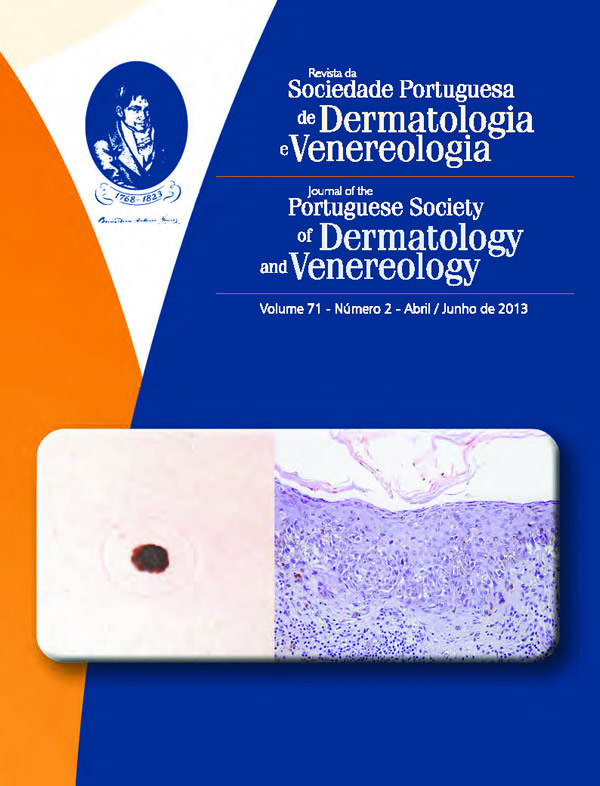COEXISTENCE OF MORPHEA, VITILIGO AND LATENT AUTOIMMUNE DIABETES OF ADULTHOOD
Abstract
About 30% of adults with morphea have a simultaneous autoimmune disease, which may support the involvement of autoimmunity in the pathogenesis of this fibrosing disorder of the skin and underlying tissues.
A 27-year-old man presented with an asymptomatic, erythematous, slightly depressed, indurated oval plaque on the abdominal region that had been present for 1 year. Another dermatological finding was acro-facial vitiligo presented for 15 years. In family history, his mother had been diagnosed with vitiligo and Hashimoto’s thyroiditis.
Hystopathological examination of the abdominal plaque supported the clinical diagnosis of morphea. Laboratory findings were unremarkable except for positive anti-glutamic acid decarboxylase antibody, which made the diagnosis of latent autoimmune diabetes of adulthood (LADA), a late-onset type 1-diabetes.
Morphea and vitiligo are skin diseases that have only rarely been reported to occur simultaneously, despite the possible autoimmune etiology in both. In this patient the investigation of other associated autoimmune diseases allowed the diagnosis of LADA. This very rare association supports an autoimmune hypothesis.
Downloads
All articles in this journal are Open Access under the Creative Commons Attribution-NonCommercial 4.0 International License (CC BY-NC 4.0).








